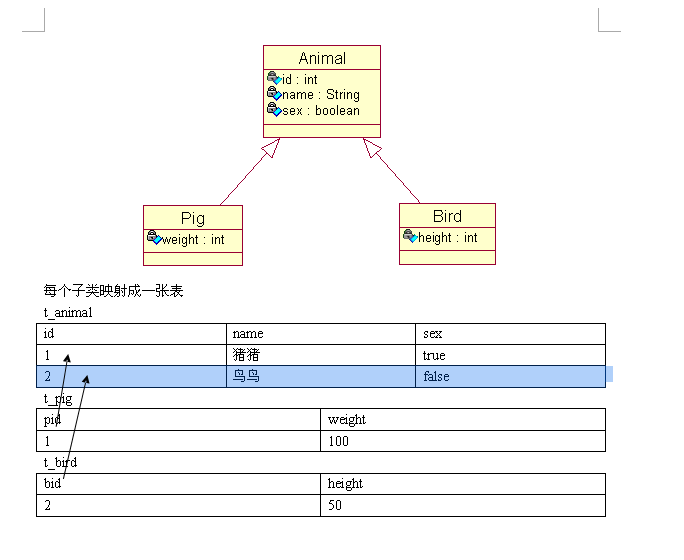hibernate中實(shí)體類(lèi)繼承,分成若干表
父類(lèi)實(shí)體類(lèi):public class Animal {
private int id;
private String name;
private boolean sex;
public int getId() {
return id;
}
public void setId(int id) {
this.id = id;
}
public String getName() {
return name;
}
public void setName(String name) {
this.name = name;
}
public boolean isSex() {
return sex;
}
public void setSex(boolean sex) {
this.sex = sex;
}
}
public class Bird extends Animal {
private int height;
public int getHeight() {
return height;
}
public void setHeight(int height) {
this.height = height;
}
}
public class Pig extends Animal {
private int weight;
public int getWeight() {
return weight;
}
public void setWeight(int weight) {
this.weight = weight;
}
}
<hibernate-mapping package="com.hibernate">
<class name="Animal" table="t_animal">
<id name="id">
<generator class="native"/>
</id>
<property name="name"/>
<property name="sex"/>
<joined-subclass name="Pig" table="t_pig">
<key column="pid"/>
<property name="weight"/>
</joined-subclass>
<joined-subclass name="Bird" table="t_bird">
<key column="bid"/>
<property name="height"/>
</joined-subclass>
</class>
</hibernate-mapping>
在數(shù)據(jù)庫(kù)中表如下:

posted on 2013-05-07 09:37 楊軍威 閱讀(408) 評(píng)論(0) 編輯 收藏


